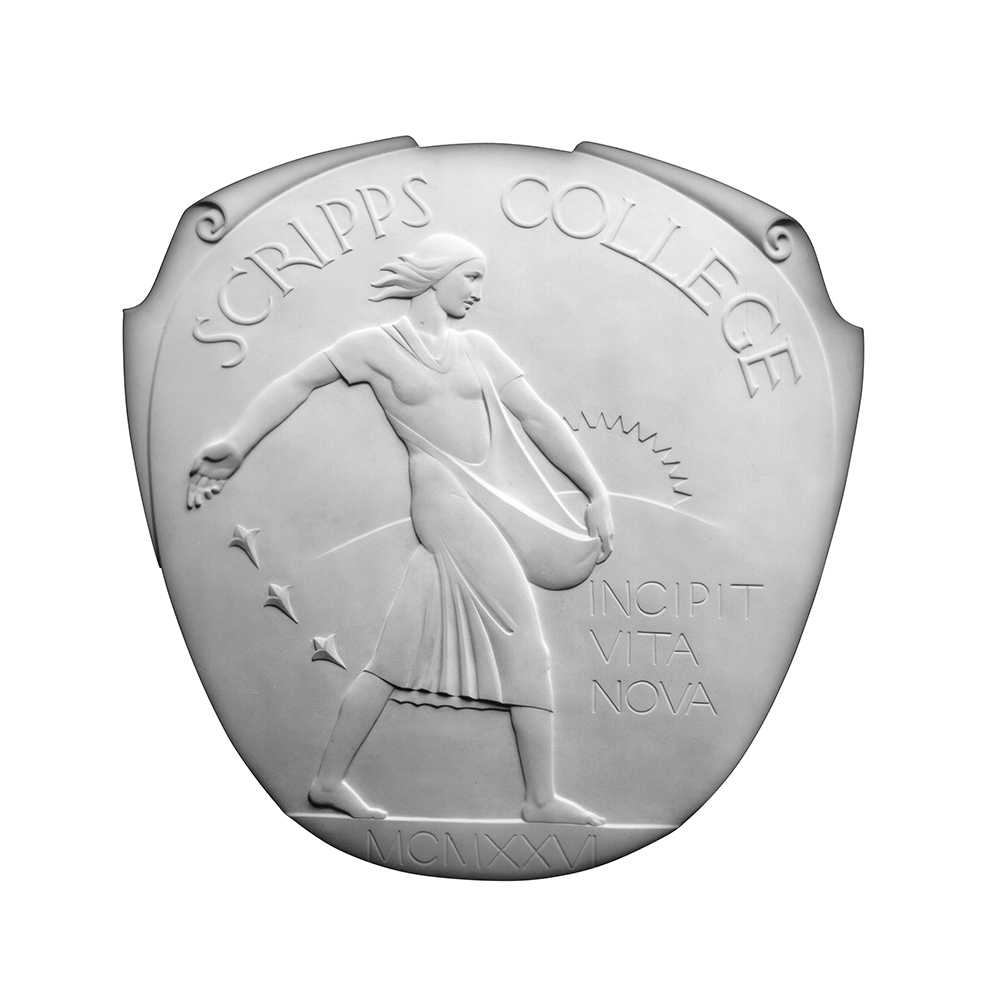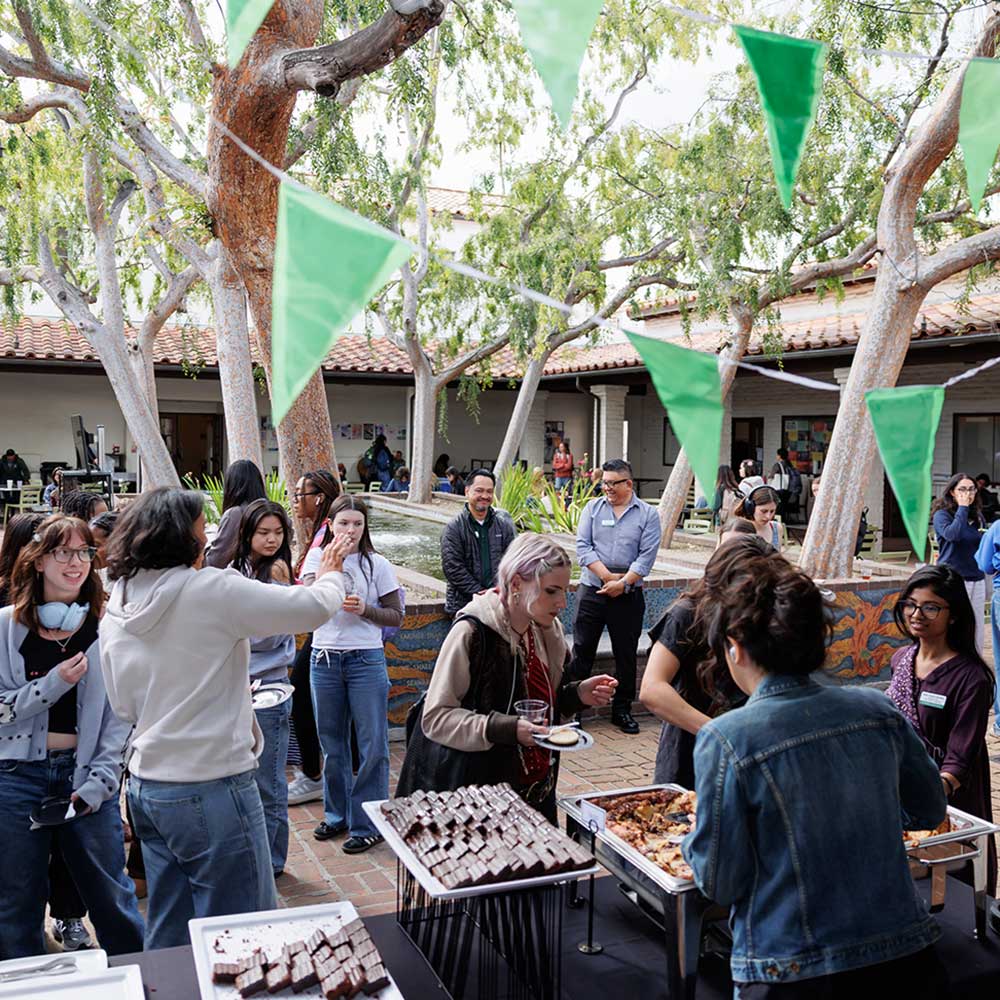
Scripps College has a long history of unique traditions. Here are a few of our most notable traditions, many of which continue today:
La Semeuse
The seal of Scripps College, designed by sculptor Lee Lawrie, depicts La Semeuse—she who sows. The image of the sower of “the good seed of thought, of action, of life” was chosen by the faculty in the 1927-28 academic year. They also selected the College motto, Incipit Vita Nova—here begins the new life. Professor Hartley Burr Alexander was largely responsible for the seal’s image and motto. Before he arrived on campus, he suggested phrase, the first words of Dante’s New Life.
“It seems to me that what colleges ought to do is to begin a new life in a very real sense, and perhaps the motto would have a double significance for Scripps in indicating not only the new life begun for each student, but also the new life which we hope may be begun from a renewed vitality in education [evidenced in the founding of this college for women].”

Thy Many Gifts
Strong in the strength of all, venturing together,
Searching, exploring the life of the mind.
Cloudless and blue above, or somber the weather,
Day follows day, all things good well-combined.
May life be free and full, life be unencumbered,
Vision and growth through the years may it hold.
Thy many gifts to us, thy benefits unnumbered
May we return, Alma Mater, threefold.
Words and music by Isabel Fothergill Smith
In the early years of Scripps College, a “Music Convo” was held each fall at which the four classes and residence halls each presented original songs in a high spirit of competition. At the “Convo” of 1932, Thy Many Gifts was presented by a self-appointed trio consisting of Isabel (Dean) Smith, who wrote the words and music in three parts, and two faculty wives, Mrs. Paul Havens and Mrs. John W. Darr. The song became and has remained the Scripps College Alma Mater. It was later revised in the 1960s when Bill Blanchard, then organist for the Pomona College faculty, added a fourth part to the work and made a minor change in notation.
Graffiti Wall
In spring of 1931, the first graduating class signed Graffiti Wall. Located between Toll Hall and Browning Hall, this area provides a place for the graduating class to create an artistic logo or image unique to them and sign each of their names. It is a visual reminder of Scripps’ history and reflects the changing tastes and interests of past years.

Afternoon Tea
The tradition of Afternoon Tea began in 1931 and continues today. The 1932 edition of the La Semeuse yearbook states, “Altogether the tea custom is a pleasant one, with the attractions of refreshments, relaxation and interesting conversation.” Scripps’ popular Afternoon Tea takes place every Wednesday afternoon during the academic year, and increasingly attracts students, faculty, staff, and visitors from all the colleges.

Matriculation
A relatively young tradition, matriculation began in 1990 with the arrival of President Nancy Bekavac. The key moment in the Matriculation Ceremony occurs in the first few days of new student orientation, when first-year students process through the Ella Strong Denison Library East Door. This door remains locked on all other days of the year save commencement, when graduating seniors exit through this same door, signifying the beginning of commencement and the end of their educational journey at Scripps.


